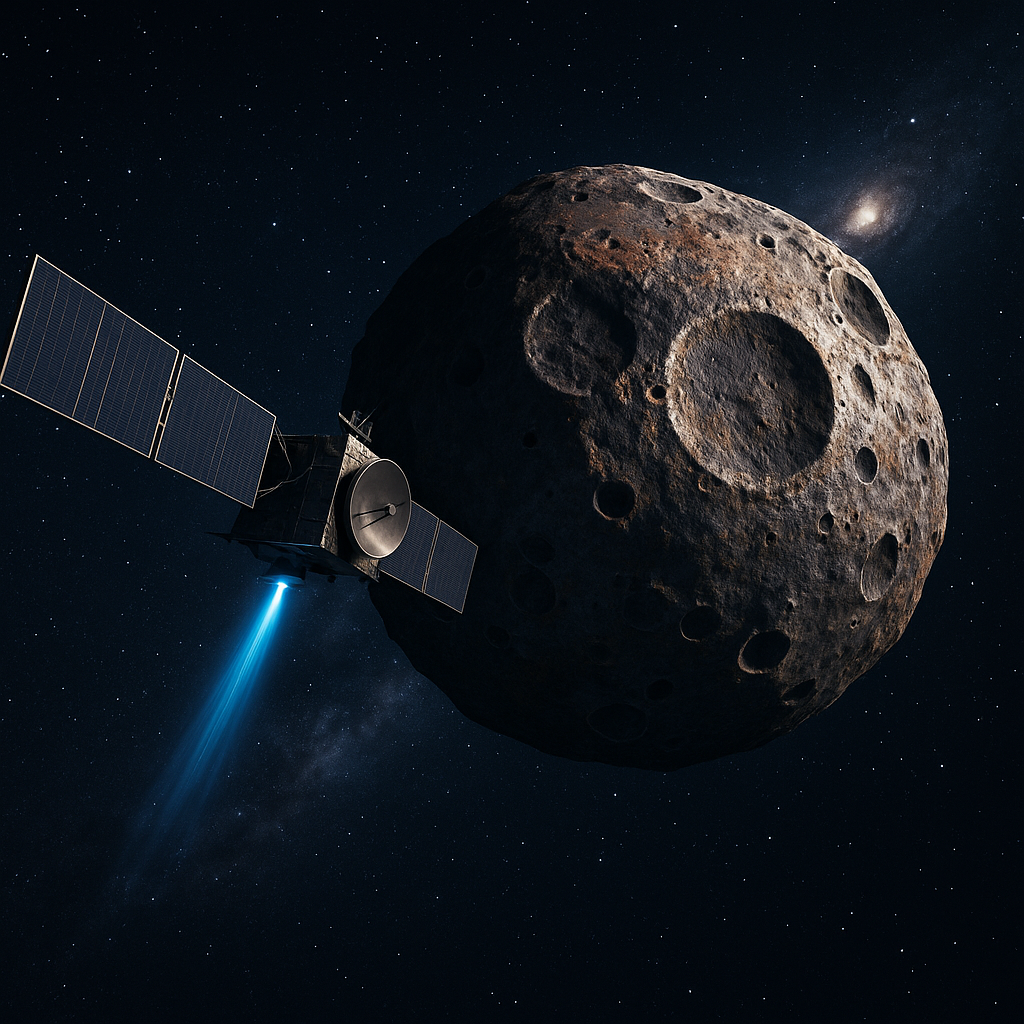In October 2023, a Falcon Heavy launched a spacecraft unlike any other. Its destination: 16 Psyche, a 220-kilometer-wide asteroid believed to be almost entirely made of nickel and iron—the exposed core of an ancient protoplanet. This is not just another asteroid mission. Psyche could give humanity its first direct look at the building blocks of terrestrial planets.
As NASA’s first mission to a metal world, Psyche is a venture into deep space and deep time. The mission, led by Arizona State University and managed by NASA’s Jet Propulsion Laboratory, represents a convergence of cutting-edge engineering, astrophysics, and the primal curiosity that drives us to understand how Earth—and rocky planets like it—formed from molten metal and stardust.
The spacecraft is powered by solar electric propulsion and will rely on a Mars gravity assist in 2026 before arriving at Psyche in 2029. Once in orbit, it will spend 26 months mapping the asteroid’s surface, analyzing its composition, and measuring its magnetic field. Instruments aboard include a multispectral imager, a magnetometer, and a gamma-ray and neutron spectrometer, each designed to probe different aspects of the asteroid’s structure and history.
The Psyche mission also hosts an experimental laser communication system known as DSOC—Deep Space Optical Communications—which aims to demonstrate high-bandwidth optical comms beyond the Moon for the first time. If successful, DSOC could revolutionize how spacecraft send data back to Earth, with up to 100x more bandwidth than traditional radio systems.
Why Psyche? Studying a world of mostly metal gives scientists a rare look into the cores of planets. Earth’s own core is unreachable, but Psyche’s surface is an open book—a book made of iron-nickel alloy, possibly speckled with frozen sulfur or other unexpected elements. This mission could confirm or revise fundamental models of planetary differentiation, where dense metals sink inward during planet formation.
With its launch, Psyche not only opened a new chapter in planetary science but also set a precedent for how targeted missions can explore solar system bodies that were once the realm of science fiction. In a solar system increasingly filled with robotic emissaries, Psyche is the emissary to the very heart of how planets like ours come to be.
]]>